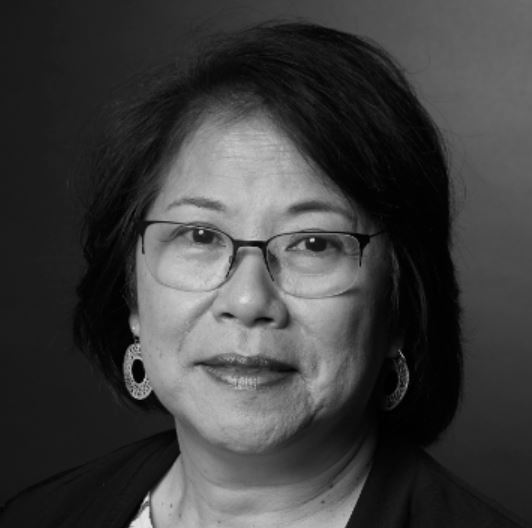Advanced Wound Care Educational Seminar
When
October 24, 2024
7:00 am to 3:30 pm
Where
Family Home Health Services
2171 Executive Drive, Suite 450
Addison, IL 60101

Dionie T. Bibat, MSN, RN, CWOCN
Division Manager, Clinical Services
Dionie Bibat represents Medline’s Clinical Services Division, supporting both internal and external post-acute customers; providing clinicians, and top-level administrators with a comprehensive approach to skin care using educational and clinical support programs including advance wound care and continence management; product evaluations, conversions, and troubleshooting issues.
Dionie earned a Bachelor’s degree in Nursing from Loyola University and has a Master of Science in Nursing: Family Nurse Practitioner (FNP) from Olivet Nazarene University. She is a Wound Ostomy Continence Nurse and obtained this specialty from the Wicks Educational Associates program.
Nursing ― This program has been approved for five clock hours of continuing education credit by The Illinois Board of Nursing, an approved sponsor of continuing education by the Illinois Department of Professional Regulation.
Administrators ― This program has been approved for five clock hours of continuing education credit by the National Continuing Education Review Services (NCERS) of the National Association of Long-Term Care Administrator Boards (NAB) – Approval #20251023-5-A105818-IN.
Itinerary
7:00 am – 8:00 am
Sponsored by Medline Industries
8:00 am – 8:15 am
Welcome and Introductions
8:15 am – 9:30 am
- Products
- DIMES (Debridement, Infection, Moisture Balance, Edge, Supportive Products)
- Wound Bed Preparation Framework
- Wound Etiology
- Resources
9:30 am – 10:30 am
Proper wound care starts with understanding the anatomy and physiology of the three layers of the skin: the epidermis, dermis, and subcutaneous tissue. As skin ages, all phases of wound healing are affected and the process is significantly slower. The inflammatory response is decreased or delayed, as is the proliferative response. This session will provide an overview of the anatomy of skin and how aging affects effective healing.
Learning objectives:
- Understand the anatomy and physiology of the skin
- Learn the implications of skin anatomy and physiology in relation to wound care
- Distinguish the properties and effects of aging on the skin and wound care
10:30 am – 10:45 am
Break
10:45 am – 11:15 am
A complete understanding of the anatomy and physiology of the skin, the phases of the healing process, symptoms of infection, and appropriate interventions for proper healing are essential for recognizing the factors that may complicate or delay wound healing. Each consideration plays a key role in assessing and managing wounds of all types. This session will examine the various factors that may delay or impede wound healing.
Learning objectives:
- Learn the factors that affect wound treatment in all phases of the healing process
- Identify symptoms of infection
- Determine the appropriate intervention for proper wound healing
11:15 am – 12:15 pm
A thorough and accurate wound assessment provides the critical information required to establish a baseline for planning appropriate and realistic treatment/care. Among the components of an assessment are observation, questioning, physical examination, and clinical investigation. Inaccurate wound documentation can impact the ability to determine the best wound treatment options and the overall wound healing process.
Learning objectives:
- Review the components of assessments and documentation
- Identify viable /non-viable tissue
- Understand common wounds and how to effectively measure wounds
12:15 pm – 1:00 pm
Lunch
1:00 pm – 1:30 pm
Pressure injuries occur when the integrity of the skin breaks down as a result of pressure, usually over a bony prominence or related to a medical or other device. They can present as intact skin or an open ulcer. Understanding the causes and properties of pressure injuries informs effective treatments and ways to relieve pressure for at-risk areas of the skin.
Learning objectives:
- Understand pressure injuries with examples of different types of pressure injuries
- Learn how to monitor for potential pressure injuries
- Gain an overview of treatments and how to relieve pressure
1:30 pm – 2:15 pm
Aging leads to a number of skin changes that not only place an older adult at risk of tissue damage, skin tears, bruising, and purpura, but can present as peri-wound problems for those with existing wounds. Examples include incontinence-associated and moisture-associated dermatitis in individuals with pressure ulcers. This session focuses on the skin injuries most common to older adults.
Learning objectives:
- Gain an overview of the most common skin injuries in older adults
- Understand the causes and treatments for common injuries such as skin tears, bruising, and purpura
- Differentiate moisture-associated skin damage (MASD), incontinent associated dermatitis (IAD), and intertrigo dermatitis (ITD)
2:15 pm – 2:30 pm
Break
2:30 pm – 3:00 pm
Protecting the skin against moisture-associated damage is an important component of comprehensive skin and wound care. For the elderly, there are many challenges in managing skin care caused by moisture such as incontinence. This session details preventive strategies as well as effective treatment tools and resources.
Learning objectives:
- Holistically assess the challenges of managing incontinence and skin care
- Learn strategies to individualize incontinence care, proper skin maintenance, and preventative strategies
- Identify tools and resources to help standardize care